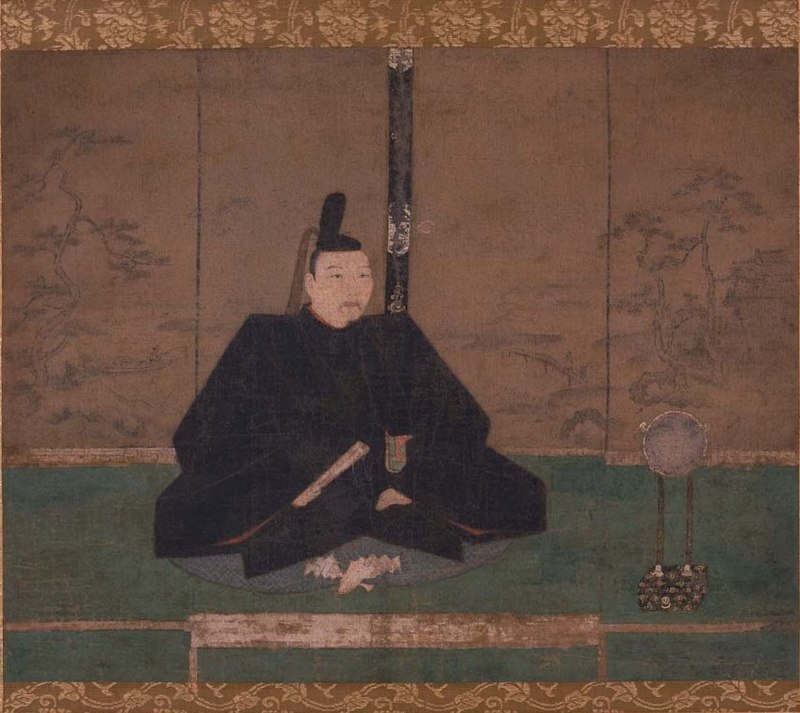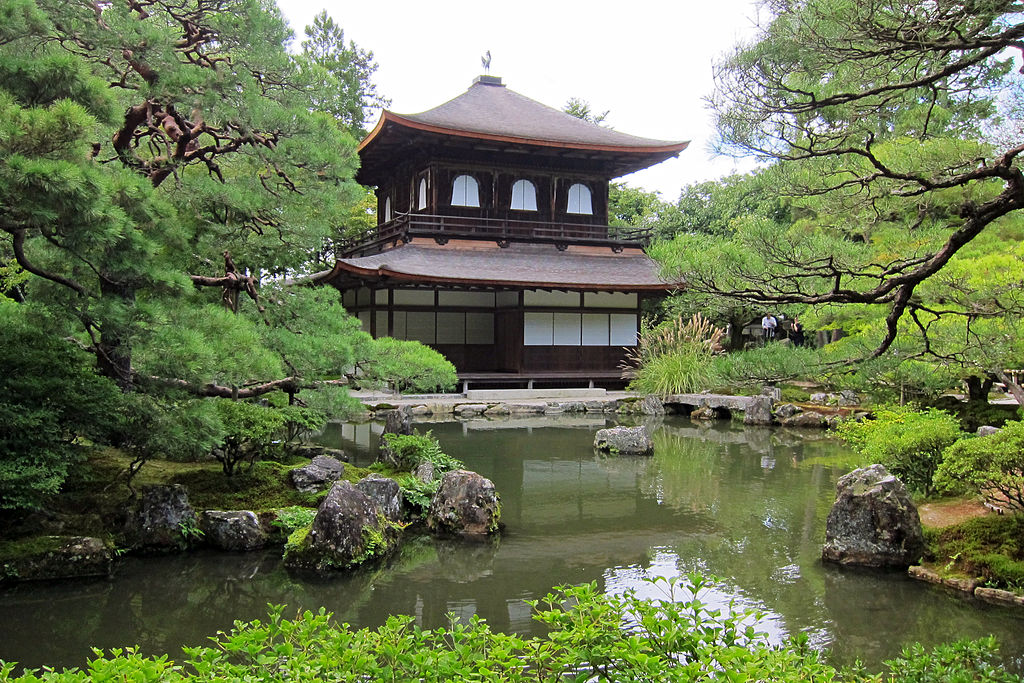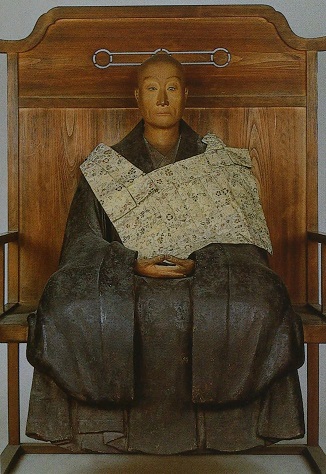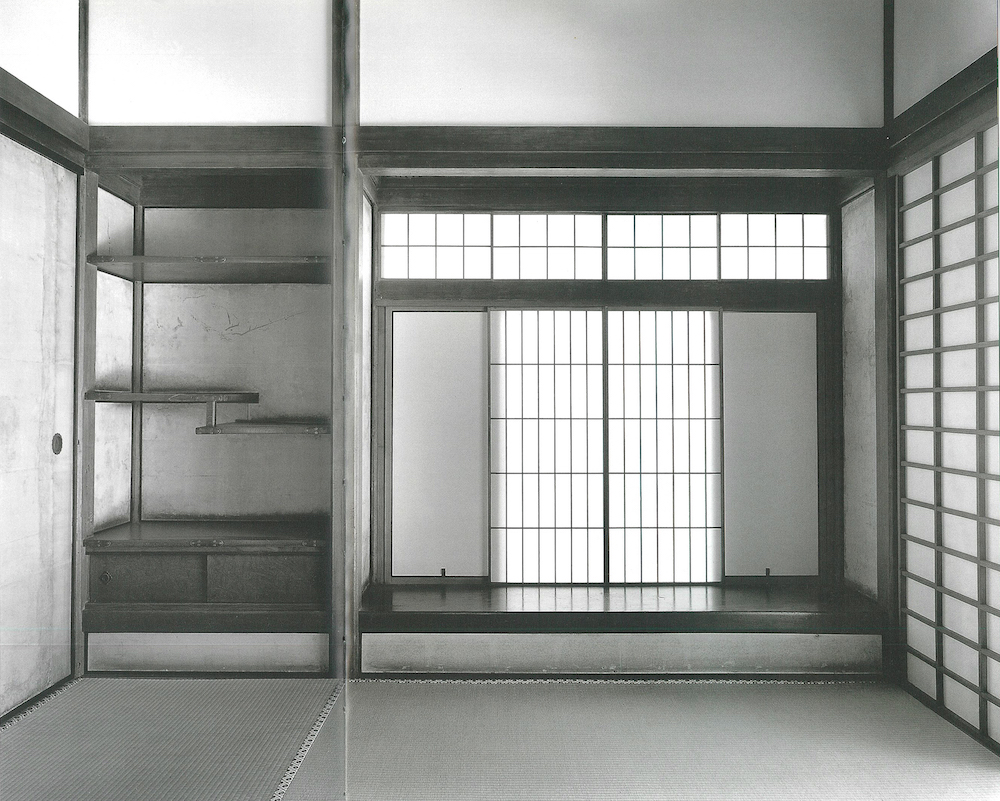In a way, modern design can be a simple design.
According to dictionary word “simple” is “condition of less elements”. Simple means that colors, shapes and materials are simple and restrained.
Simple is not a monopolist of modernism. Nor is it limited to architecture or product design. Where did the values of simplicity come from? What is the concrete appearance of simple? In the series Simple Genealogy, explore different aspects of simplicity.
Shogun Ashikaga Yoshimasa (1436-1490) is the eighth general (Shogun, the military dictator of Japan, Commander in chief of Samurai soldiers) of the Muromachi shogunate, and is known today as the founder of a culture called Higashiyama culture. Era which construction of Higashiyama Sanso known as Ginkakuji (Jishanji) has took place.
( Shogun Yoshimasa Ashikaga , Tokyo National Museum Collection)
(Ginkakuji (Jishuji), photo by oilstreet-en: Ginkaku-ji)
Shogun Ashikaga Yoshimasa’s evaluation as a general is the worst.
It is well known that, despite people suffering from hunger, they neglected the Emperor’s recommendation and spent much of their time indulging in the reconstruction of the Ashikaga House, called “Flower palace” and indulging in Sarugaku and Sake. The war on his successors triggered an outburst of Onin war (1467-1477). While the purpose of this battle is sunclear, this war continues for 11 years, and the city of Kyoto returns to Ashikaga. It is said that everything except Sanjusangendo, Rokuharamatsuji and Senbon-Sakshindo were burned down. As the Daimyo divided into Hosokawa Katsumoto’s East Army and Yamana Sozan’s West Army, General Yoshimasa’s attitude was less willingness, indecisiveness, turnaround, turning away from the war, and spurring conflict and confusion Call. It was said to be the worst incompetent general in history.
( Shogun Yoshimasa Ashikaga, Jishoji temple, source: http://photozou.jp/photo/photo_only/197391/195616032?size=1024#content)
Shogun Yoshimasa Ashikaga had a poor family life.
Yoshimasa had a feud with Hiko Tomiko who is obsessed with succeeding power to her son Yoshinao . He is disgusted with Tomiko who keeps property only for her and quickly decides to separate the residence. Yoshimasa rushes to build a separate residence while Tomiko making a huge stockpile and seems that Tomiko did not try to pay any for her husband’s Higashiyama Sanso construction. Yoshimasa’s relationship with the his son Yoshinao, who finally succeeded as the ninth general, did not go well after retiring and among these, Yoshinao became sick and died at age 23 before his father Yoshimasa.
The Higashiyama culture created by Shogun Ashikaga Yoshimasa is said to revolutionize the concept of Japanese beauty after. It direted the sense of beauty of Japan thereafter. Shogun Ashikaga Yoshimasa is also a figure who is respected as a creator of new beauty.
“Why did the aesthetics that occur in this era held “simple “and” blank “? The impression of the people who were there at the time of the war, including Yoshimasa, may have influenced the way they feel things “(Ken Hara” White “, Chuo Koron Shinsha, 2008)
“In Japanese history, we are tempted to conclude that there is no one who influenced the aesthetics of the Japanese more than Yoshimasa. This is the only, but very important feature that makes up for the shortcomings of the rule. The worst in history General was the only general who left an eternal legacy for all Japanese (Donald Keane, Ashikaga and Ginkakuji, Chuko Bunko, 2008).
The new beauty created by Shogun Yoshimasa Ashikaga is symbolized in a space called Dojinsai located in Toshodo (1485) of Jishuji Temple (Ginkakuji). The space of this 4 tatami mat half is the space that became the starting point of the tea room, and this space format such as the fixtures by rattan and shoji, the room with full tatami mats, the difference shelf and the floor decoration of the attached school, will be called the building of Shoin later. It is said that it has become the prototype of all the traditional architecture of today and the so-called “Japanese-style room”.
(Jishoji Temple Toshodo Dojinsai, source: “Japanese Architectural Space”, New Architecture, 2005)
Space composed of all straight lines, planned asymmetry arrangement, combination of color and white of natural material, landscape of the outside garden cut out like a picture frame. It is a space that restrained simplicity dominates.
It is said that Noami is deeply involved in the construction of Jishoji Temple (Ginkakuji). Noami is a character who has been familiar with paintings, songs, calligraphy, and incense, and introduces Murata Juko of tea ceremony to Yoshimasa. Murata Juko is the founder of Wabi-cha, who studied Zen from Ikkyu Sojun and later completed it by Senrikyu. Yoshimasa practiced wabi tea here in the space of Doinsai.
Wabi tea or Wabi-Sabi, It is an aesthetic that denies perfection and denies human creation.
The words left by Murata Juko symbolize shuch as, “Cold and dry”, “Crossing Japan and Han’s border”, “A moon shines brighter in between clouds ” and “Follow your heart but not drift” .
Values that deny the established perfection of beauty (Value of Heian period) and, furthermore, deny the act and intention of such. Somewhere in the degree of perfection, I feel a shameful, and I am always averse to this self-consciousness and self-revelation, respecting the simplicity that has been suppressed in every way. It is no exaggeration to say that the source of the Japanese values is here.
Why did Shogun Yoshimasa Ashikaga was able produced new aesthetics/cuture?
He was not only a tea ceremony lover, but also a Noh (theatrical art), Renka (a group song) and Waka (poetry) lover. He was a contemporary culture intellectual of the era.
Rebellion of Onin completely burned the monuments accumulated by the Japanese culture such as architecture of the palace, temples and shrines, Paintings, kimonos and various ornaments. The life as a general has finished almost nothing accomplished. Furthermore, stumbling in private life.
(Paper version of Onins Rebellion by Shinyodo Enoki, second volume (part), source:
https://en.wikipedia.org/wiki/%E3%83%95%E3%82%A1%E3%82%A4%E3%83%AB: Shinnyod% C5% 8D_engi, _vol.3_ (part). jpg)
Remorse, regret, disappointment, sense of powerlessness. Yoshimasa must have gradually come to think of the emptiness of human and desire itself. Tradition, history, culture, architecture, the inability to create human will. And the inability of human will itself. Yoshimasa must have felt it.
Instead of impermanence values and sense of emptiness ends in mere pessimism or inaction, he sublimed negative energy to new value. That is the reason for Shogun Yoshimasa Ashikaga was a creator.
Shogun Yoshimasa whose decline in authority was evident and was refused to be fund from the guardian daimyo, and forced to source fund from temples and shrines in Kyoto and Nara. Jisho-ji (Ginkaku-ji) was built by predatory procurement.
It was a work of elder generals who were not obsessed with their hobbies, hoarding their hobbies, and being a practice of violence and pride, and at the same time they were forced to express themselves while denying themselves, the ultimate of Yoshimasa’s ultimate It was the result of human recognition.
Simple was born from the irony of you can not escape from work or expression while denying work or expression. A simple genealogy of Shogun Ashikaga Yoshimasa teaches us so.
* Reference:
Masakazu Yamazaki “Muromachiki” (Kodansha Bunko, 1985)
Donald Keene, “Ashiga Yoshimasa and Ginkakuji” (Chunko Bunko, 2008)
Kengo Hara “White” (Choron Kosen Shinsha, 2008)
Yuichi Sakaza “Oen’s Rebellion” (Chinese New Book, 2016)

















